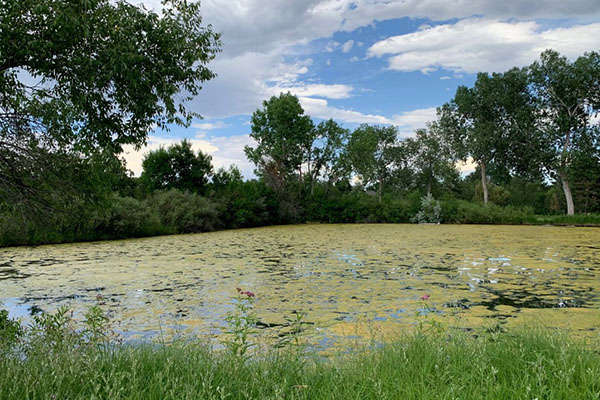Algal Blooms#

Algal blooms can be caused by a variety of algae and can occur in natural waterbodies under certain environmental conditions. Blue-green algae (BGA) naturally occur in waterbodies, including City-owned/managed ponds, lakes and reservoirs. The rapid growth of blue-green algae under certain environmental conditions can lead to harmful algal blooms (HABs).
Environmental conditions that favor HABs include:
- Warm air and water temperatures
- Shallow and stagnant waters
- Elevated nitrogen and phosphorus entering the water
Mid-summer through early fall is the most common time for HABs to occur. Cyanotoxins are highly toxic to people and pets and can be produced by some strains of BGA. The presence of BGAs in a waterbody does not mean that cyanotoxins are present. The City does not routinely monitor water bodies in parks and natural areas for algal blooms or cyanotoxins.
Visual indicators of algal blooms often include:
- Surface scum
- Foam
- Floating algae mats
- Off-colors
- The presence of dead fish
Play it safe.
- Limit exposure by following no swim guidelines.
- Keep pets out of water.
- Wash hands.
- Don’t drink the water.
- Be cautious of accidental ingestion while recreating.
Did You Know?
Permanent "duct mastic" material – not duct tape – should be used for sealing attic ductwork and crawl spaces.
We clean and maintain the City's wastewater system year-round to prevent sewer backups. You can help by only flushing the three Ps.
We continually work to improve our infrastructure and distribution systems. See what’s in the works.